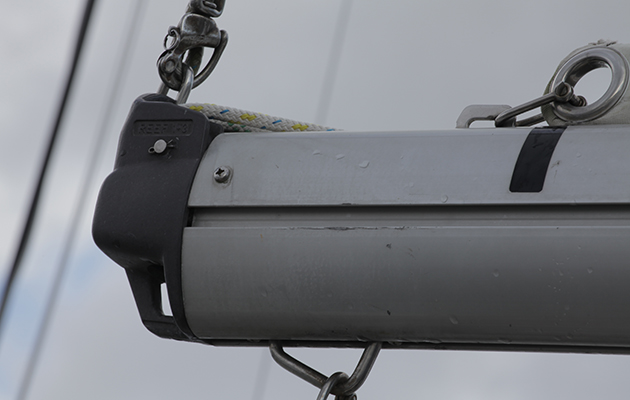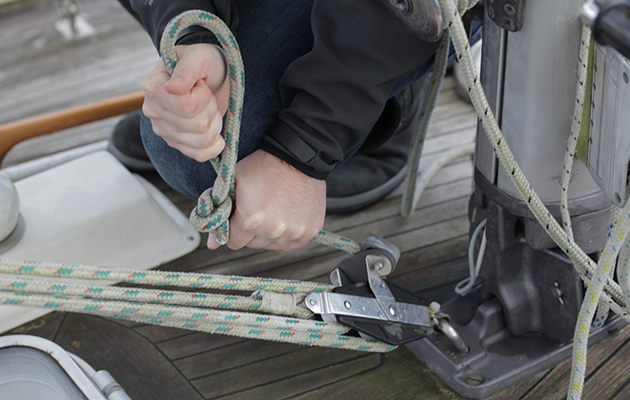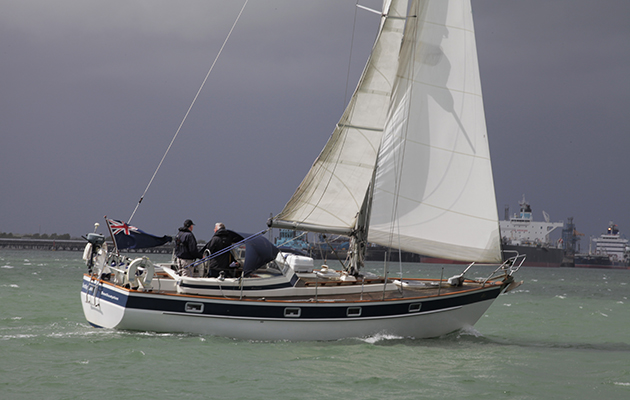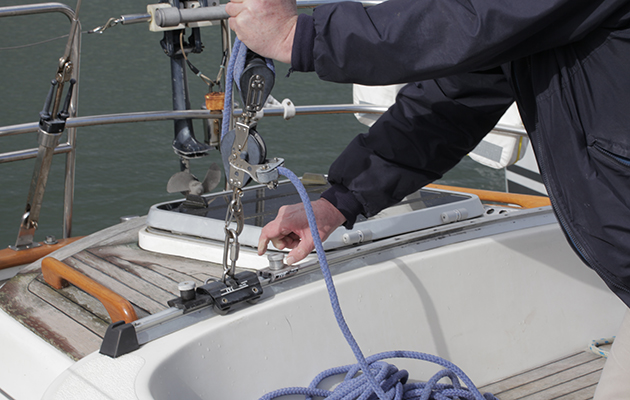Duncan Wells continues his series looking at how to get the most out of your boat. This issue: trimming the mainsail

Duncan Wells is principal of Westview Sailing,
For the purposes of this article, we will concentrate on sailing to windward. Modern yachts, particularly monohulls, do this very well.
With a good set of sails, a well-set-up rig and some time spent practising trimming, you’ll find you are able to make big gains in terms of the angles you can sail. However, modern yachts are also easily overpowered.
The crux of modern sail trim is understanding how to balance your sails and the power they generate with the resistance of your keel.
The end product of a well-trimmed yacht is one that’s a pleasure to sail, easy on the helm and faster through the water.
Trimming the mainsail
1. The mainsail controls

If your traveller is fitted with a tackle adjustment, making changes is easy. If not, you will have to luff up, then move the car across by pulling or pushing on the falls of the mainsheet
With the mainsail, we have one or two extra controls to play with:
- Luff tension is the same as for the headsail
- Clew outhaul for tightening or releasing the foot of the sail
- Kicking strap or vang for pulling the boom down
- Mainsheet traveller with a car that can be moved to windward or to leeward
2. Set clew tension with the outhaul and set traveller

Sailing close hauled in light winds, we would want to let off the clew outhaul to increase belly in the sail, and then move the traveller up to windward and sheet the main in until the boom is amidships.
We will also want to leave the kicker/vang loose to ensure the leech isn’t over tight, allowing some twist in the top of the sail.
Keep hands away from the car on the traveller. Most mains have telltales near each of the batten pockets up the leech but actually for our purposes, we really only need to concentrate on the top most telltale as this is the one that is the hardest to get to fly properly.
3. Check top telltale, set sail shape and check battens are parallel

We can tell if the sail is set nicely as the top telltale will fly most of the time. If it hides behind the leeward side of the sail and flies forward, we have too little twist in the sail and must ease the sheet.
In light airs, we will want twist in the sail but in medium to heavy airs, we want to remove this twist and flatten the sail. We will do this by tightening the clew outhaul to flatten the foot of the sail and trim the mainsheet until the top batten lies parallel with the boom or very nearly so.
We can help with this by tightening the kicker/vang, which will add tension to the leech of the sail.
4. Fine adjustments

It is a combination of kicker and mainsheet tension that will flatten the sail and get that batten lying along the boom. Now of course the main works in conjunction with the headsail and is affected by the backwind coming off the headsail.
If the main starts to backwind with the turbulence from the headsail – we see this when the luff of the main is being pushed to windward and means that the slot between the main and headsail is too narrow – then we need to harden the mainsheet until this stops and/or tighten the clew outhaul further, to flatten the sail.
We may find this overdoes the tension of the mainsheet and our top telltale along the leech flies to leeward again and forward, so we will need to ease the mainsheet and try to prevent the backwinding by easing the headsail sheet, to widen the slot.
It’s all a question of trying to balance the shape of our sails so they work together.
5. Balance your sails

We also need to balance our sails in terms of size. If our headsail is too big and powerful for our main, the bow will head off to leeward and will suffer from lee helm, constantly having to work to keep the boat on the wind. If it’s too small, we will experience undue weather helm.
6. The right amount of sail

A little weather helm is necessary to maintain feel and is desirable.
In the event of a big gust, we would want to know that the boat will round up to the wind and stop, as opposed to the lee helm where a big gust would make the boat accelerate away and present her stern to the wind and possibly an unscheduled gybe.
Remember, it’s the mainsail that significantly influences at what angle you sail.
7. Stronger winds

For stronger winds, the clew outhaul should be tightened, the traveller moved to leeward and the mainsheet adjusted accordingly.
Again, if the leech flutters, the leech line can be tightened slightly just to ‘put the sail to sleep’ as Eric Hiscock used to say.
Too much tension and you will stall the sail. Airflow over the surface is the key to getting efficient drive out of the canvas.




